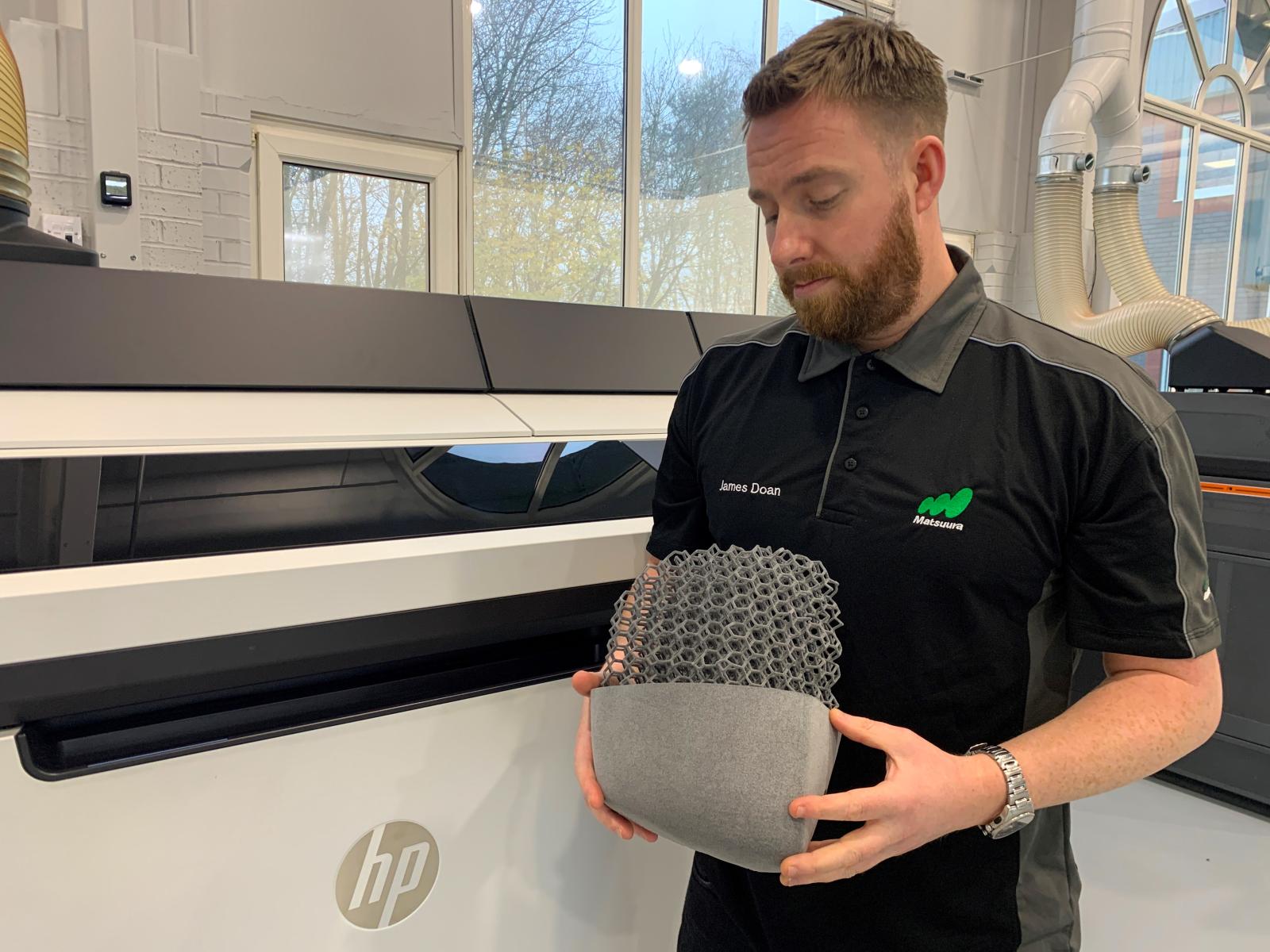
Ongoing supply chain disruption has forced organisations to seek new ways to navigate through a challenging climate. This has placed technologies such as additive manufacturing (3D printing), artificial intelligence, and robotics under the spotlight to help shorten supply lines and revolutionise global business operations, explains Luke Smoothy, Founder and Director of Get It Made.
With ongoing delays in logistics hindering organisations’ ability to deliver products and services in a timely manner, one way to streamline these activities is the ability to manufacture all critical components at the point of assembly. This is why AM is increasingly playing a critical role in transforming manufacturing workflows and supply chains.
Adoption of 3DP
Such is the flexibility of 3D printing, its technology is rapidly accelerating to address a much wider range of applications. As more businesses look to AM to offer very specific applications, they are also wanting to collaborate with an AM partner who is not just able to integrate the entire solution as well as make it function seamlessly in their existing production workflow but also work together on developing a bespoke solution for their requirements.
While we’re seeing AM “take off” in demanding environments such as rocketry, aerospace, military and defence, its use is also gaining momentum in industrial applications including automotive, semiconductor equipment and in healthcare for medical devices and tools. In particular, the dental industry has been a leader in bringing AM to elevate the patient experience, with the recent progress in 3D materials improving dental practice capabilities over the last decade.
Embracing technology
What’s becoming evidently clearer is that key decision makers must hasten the move to digitisation and localisation of their supply chain if they are to prioritise speed, volume, cost, and sustainability - with AM playing a pivotal role.
This is highlighted in a recent report by Make UK, which reveals 93% of manufacturers believe that supply chains will remain under pressure through 2024 at least. While manufacturing businesses have evolved their supply chains by necessity, they can seize further opportunity through further improving strategies and harnessing technology. While 82% of manufacturers stated that supply chain monitoring is critical to their business, around a quarter neither monitor up or down the supply chain, reflecting the need for improvement. Results also revealed that 62% of businesses haven’t changed their strategy to invest in supply chain technology, and although 47% have increased supply chain monitoring, this still falls significantly short.
More speed, higher volume
We are already seeing a real shift from low volume prototyping to high volume manufacturing, as more manufacturers realise the benefits of additive manufacturing. While rapid prototyping remains one of 3D printing’s primary uses, businesses will evolve their key additive manufacturing applications from prototyping and R&D to production.
Demand for higher performance materials at increasing volume illustrates the confidence manufacturers are placing in the growing range of AM technologies.
As more businesses make the switch to volume additive production, this will fuel higher demand for scaled post-processing and full factory automation solutions underpinned by advanced machine learning and vision technologies, with the aim of improving production consistency.
Less cost
Another attractive feature of 3D printing is that upfront investment is kept low as no tooling is required, making low volume production and one-off parts more economical. This proves a particularly attractive benefit for low volume production as the part design can be changed at any time, quickly and easily.
Take injection moulding for instance, a conventional manufacturing technique that requires high initial investments and minimum order quantities, which potentially exposes businesses to more financial risk. Injection moulding requires more time to produce parts, whereas 3D printing, as a single step manufacturing process, can manufacture parts within hours, which speeds up the prototyping process to enable faster completion of each stage to cut lead times.
Addressing sustainability challenges
Sustainability has become a driving force as manufacturers must now focus on helping to achieve NetZero, as sustainable manufacturing is being seen as not just environmentally, but economically viable.
The industry is now coming under increasing pressure to design and manufacture components and parts that are lighter and stronger, while using less material. Many companies are already seeing the alluring weight and cost saving merits through harnessing AM processes, with one use case in the aerospace sector involving General Electric (GE) and its work on new Catalyst aircraft engines. Taking a design that originally required 855 engine components, GE reduced it down to 12 titanium 3D-printed parts while retaining the same functionality of older models. This not only significantly reduces production costs but also the weight, to give lower emissions. Thanks to 3D printing, the improvements helped to reduce overall weight by five per cent and improve brake-specific fuel consumption by one per cent.
3D printing uses only the exact required amount of material to create a part or product, which means that for most components, extra material with conventional production can be removed at the design stage. This not only makes 3D printing more cost efficient over the full lifecycle of the part but also helping to protect the environment by creating less waste when compared to other subtractive forms of fabrication, such as milling, or laser cutting.
While the capabilities of AM are now beginning to be harnessed by engineers and manufacturers alike, we now may be able to address the global problems which have plagued the supply chain for too long.